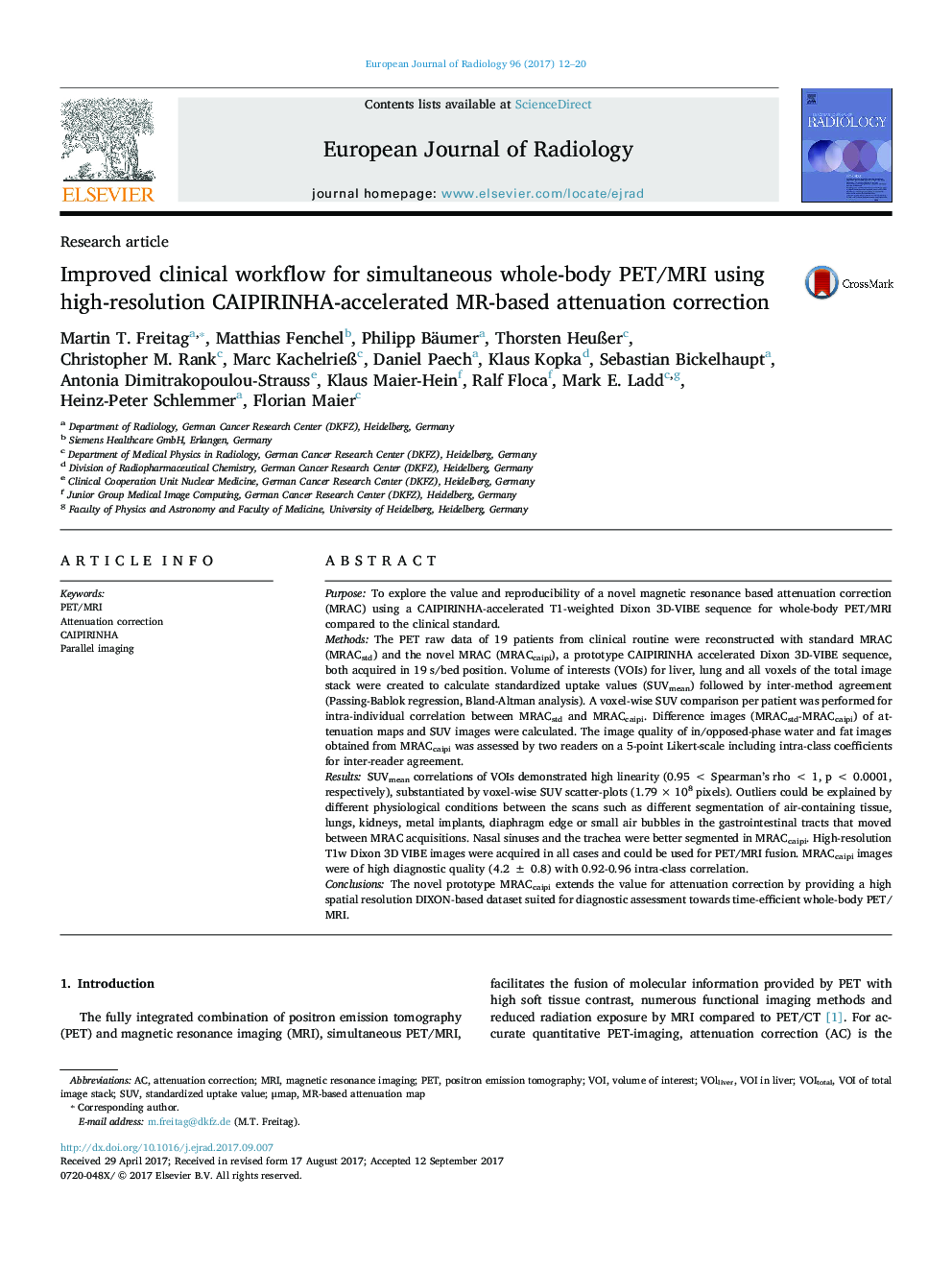| Article ID | Journal | Published Year | Pages | File Type |
|---|---|---|---|---|
| 5726201 | European Journal of Radiology | 2017 | 9 Pages |
â¢CAIPIRINHA-accelerated MR-based attenuation correction enhances the clinical PET/MRI workflow.â¢The optimized MR-based attenuation correction has potential to replace the clinical standard.â¢A usually separately conducted T1w in axial orientation can be omitted.
PurposeTo explore the value and reproducibility of a novel magnetic resonance based attenuation correction (MRAC) using a CAIPIRINHA-accelerated T1-weighted Dixon 3D-VIBE sequence for whole-body PET/MRI compared to the clinical standard.MethodsThe PET raw data of 19 patients from clinical routine were reconstructed with standard MRAC (MRACstd) and the novel MRAC (MRACcaipi), a prototype CAIPIRINHA accelerated Dixon 3D-VIBE sequence, both acquired in 19 s/bed position. Volume of interests (VOIs) for liver, lung and all voxels of the total image stack were created to calculate standardized uptake values (SUVmean) followed by inter-method agreement (Passing-Bablok regression, Bland-Altman analysis). A voxel-wise SUV comparison per patient was performed for intra-individual correlation between MRACstd and MRACcaipi. Difference images (MRACstd-MRACcaipi) of attenuation maps and SUV images were calculated. The image quality of in/opposed-phase water and fat images obtained from MRACcaipi was assessed by two readers on a 5-point Likert-scale including intra-class coefficients for inter-reader agreement.ResultsSUVmean correlations of VOIs demonstrated high linearity (0.95 < Spearman's rho < 1, p < 0.0001, respectively), substantiated by voxel-wise SUV scatter-plots (1.79 Ã 108 pixels). Outliers could be explained by different physiological conditions between the scans such as different segmentation of air-containing tissue, lungs, kidneys, metal implants, diaphragm edge or small air bubbles in the gastrointestinal tracts that moved between MRAC acquisitions. Nasal sinuses and the trachea were better segmented in MRACcaipi. High-resolution T1w Dixon 3D VIBE images were acquired in all cases and could be used for PET/MRI fusion. MRACcaipi images were of high diagnostic quality (4.2 ± 0.8) with 0.92-0.96 intra-class correlation.ConclusionsThe novel prototype MRACcaipi extends the value for attenuation correction by providing a high spatial resolution DIXON-based dataset suited for diagnostic assessment towards time-efficient whole-body PET/MRI.
